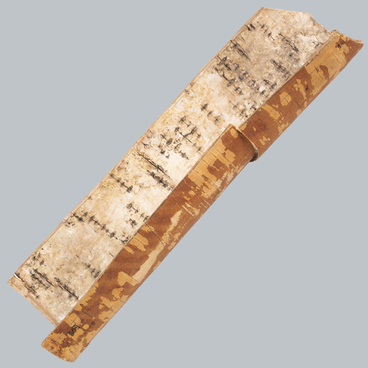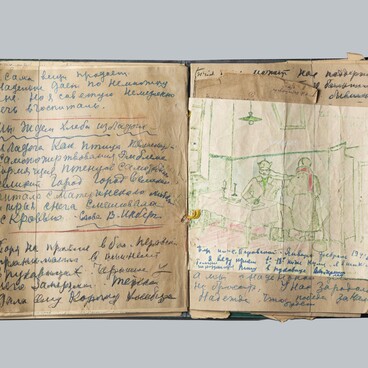Alexey Maksimenkov, the first head of the Military Medical Museum, and Yefim Smirnov, the head of the Main Medical Directorate of the Red Army, initiated the establishment of special frontline teams at the museum. It was done to summarize and preserve the experience of Soviet military medicine and the feats of doctors in the Great Patriotic War for future generations.
The team consisted of a supervisor, painters, a photographer, a forensic surgeon, and other specialists. Photographers and painters traveled to all the fronts and worked in extremely difficult conditions, often in poor light and in extreme haste. Sometimes, the combat situation forced them to take up arms.
Their dedication helped to create a large number of images that depicted the activities of the Soviet Army’s Medical Corps. Many photographs and sketches served as the basis for models, mock-ups, and statues, which were manufactured at the museum.
An example of such art is the statue “First Aid”. Igor Krestovsky, a master of monumental and decorative sculpture, was commissioned to create this statue by the Military Medical Museum in 1950. After the war, he became famous for his work on the restoration of Leningrad’s sculptural monuments, including the Peterhof Palace and Park.
The sculptural composition consists of two figures: a wounded soldier and a nurse, who applies a bandage. The statue is a testament to the selfless service of nurses and medical instructors, most of whom were women. They had to carry the wounded out of battle under enemy fire.
In 1941, frontline medical workers survived for an average of 40 seconds. Through their efforts during the war, doctors helped over 17 million soldiers return to active service. For exceptional courage and dedication, 47 military doctors were awarded the title Hero of the Soviet Union, and 46 nurses received the highest international award — the Florence Nightingale Medal.
The team consisted of a supervisor, painters, a photographer, a forensic surgeon, and other specialists. Photographers and painters traveled to all the fronts and worked in extremely difficult conditions, often in poor light and in extreme haste. Sometimes, the combat situation forced them to take up arms.
Their dedication helped to create a large number of images that depicted the activities of the Soviet Army’s Medical Corps. Many photographs and sketches served as the basis for models, mock-ups, and statues, which were manufactured at the museum.
An example of such art is the statue “First Aid”. Igor Krestovsky, a master of monumental and decorative sculpture, was commissioned to create this statue by the Military Medical Museum in 1950. After the war, he became famous for his work on the restoration of Leningrad’s sculptural monuments, including the Peterhof Palace and Park.
The sculptural composition consists of two figures: a wounded soldier and a nurse, who applies a bandage. The statue is a testament to the selfless service of nurses and medical instructors, most of whom were women. They had to carry the wounded out of battle under enemy fire.
In 1941, frontline medical workers survived for an average of 40 seconds. Through their efforts during the war, doctors helped over 17 million soldiers return to active service. For exceptional courage and dedication, 47 military doctors were awarded the title Hero of the Soviet Union, and 46 nurses received the highest international award — the Florence Nightingale Medal.


